The AnandTech Coffee Lake Review: Initial Numbers on the Core i7-8700K and Core i5-8400
by Ian Cutress on October 5, 2017 9:00 AM EST- Posted in
- CPUs
- Intel
- Core i5
- Core i7
- Core i3
- 14nm
- Coffee Lake
- 14++
- Hex-Core
- Hyperthreading
Rise of the Tomb Raider
One of the newest games in the gaming benchmark suite is Rise of the Tomb Raider (RoTR), developed by Crystal Dynamics, and the sequel to the popular Tomb Raider which was loved for its automated benchmark mode. But don’t let that fool you: the benchmark mode in RoTR is very much different this time around.
Visually, the previous Tomb Raider pushed realism to the limits with features such as TressFX, and the new RoTR goes one stage further when it comes to graphics fidelity. This leads to an interesting set of requirements in hardware: some sections of the game are typically GPU limited, whereas others with a lot of long-range physics can be CPU limited, depending on how the driver can translate the DirectX 12 workload.
Where the old game had one benchmark scene, the new game has three different scenes with different requirements. These are three scenes designed to be taken from the game, but it has been noted that scenes like 2-Prophet shown in the benchmark can be the most CPU limited elements of that entire level, and the scene shown is only a small portion of that level. Because of this, we report the results for each scene on each graphics card separately.
Graphics options for RoTR are similar to other games in this type, offering some presets or allowing the user to configure texture quality, anisotropic filter levels, shadow quality, soft shadows, occlusion, depth of field, tessellation, reflections, foliage, bloom, and features like PureHair which updates on TressFX in the previous game.
Again, we test at 1920x1080 and 4K using our native 4K displays. At 1080p we run the High preset, while at 4K we use the Medium preset which still takes a sizable hit in frame rate.
It is worth noting that RoTR is a little different to our other benchmarks in that it keeps its graphics settings in the registry rather than a standard ini file, and unlike the previous TR game the benchmark cannot be called from the command-line. Nonetheless we scripted around these issues to automate the benchmark four times and parse the results. From the frame time data, we report the averages, 99th percentiles, and our time under analysis.
All of our benchmark results can also be found in our benchmark engine, Bench.
#1 Geothermal Valley Spine of the Mountain
MSI GTX 1080 Gaming 8G Performance
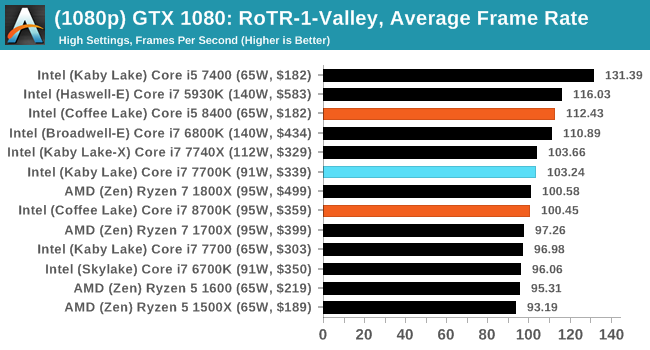
1080p


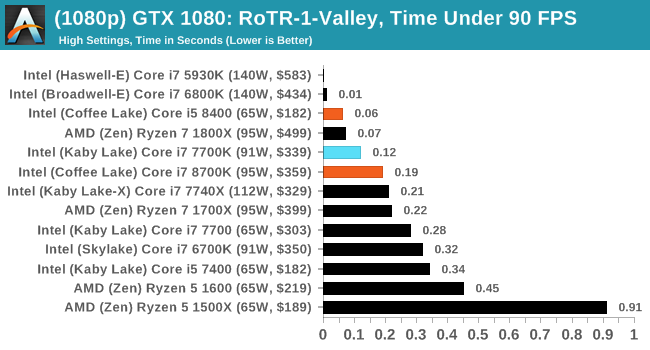
4K
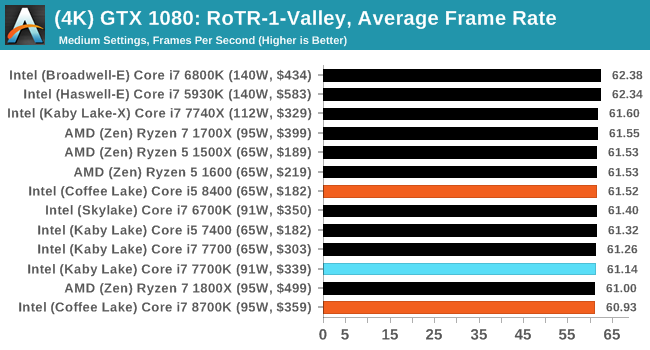
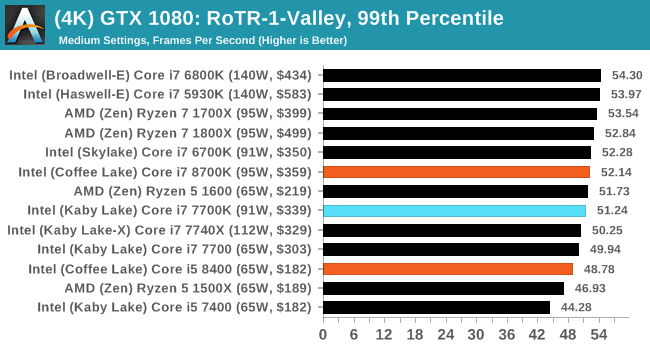
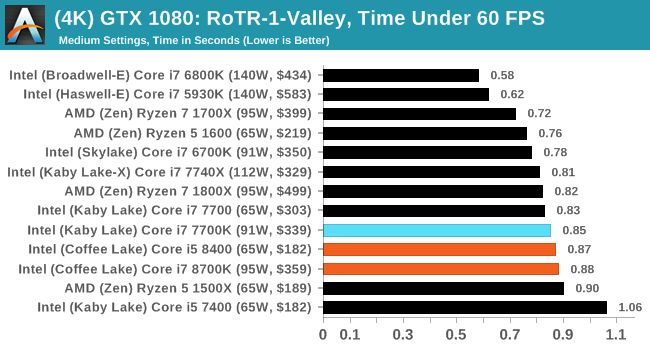
#2 Prophet’s Tomb
MSI GTX 1080 Gaming 8G Performance

1080p

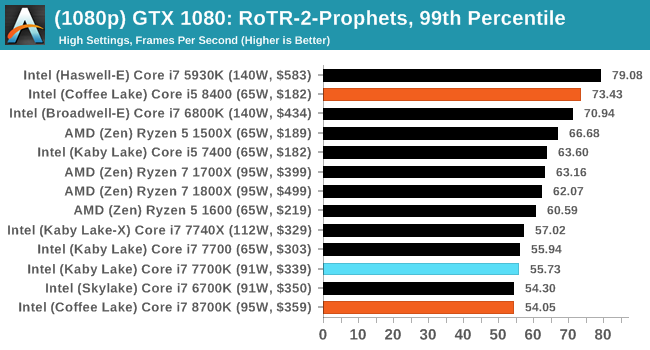

4K
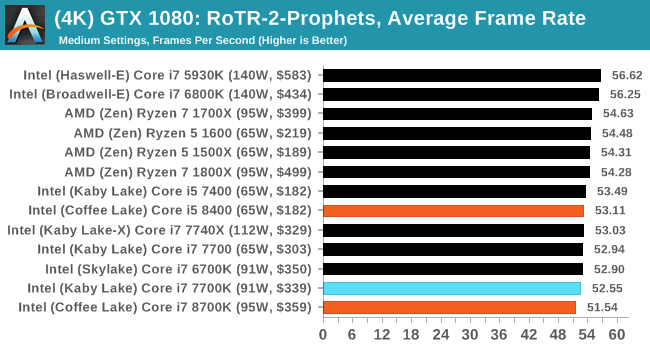
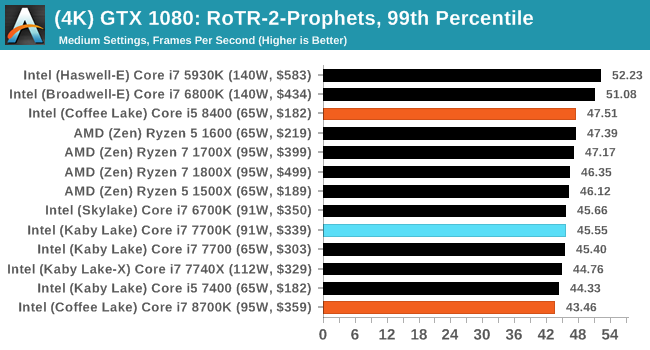
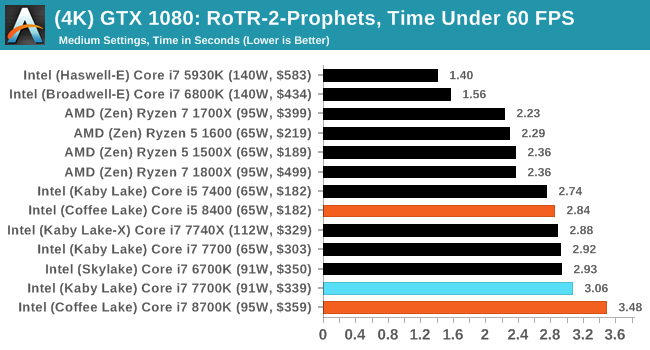
#3 Spine of the Mountain GeoThermal Valley
MSI GTX 1080 Gaming 8G Performance
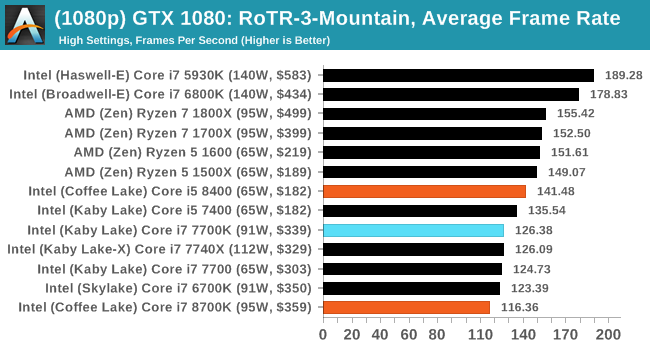
1080p

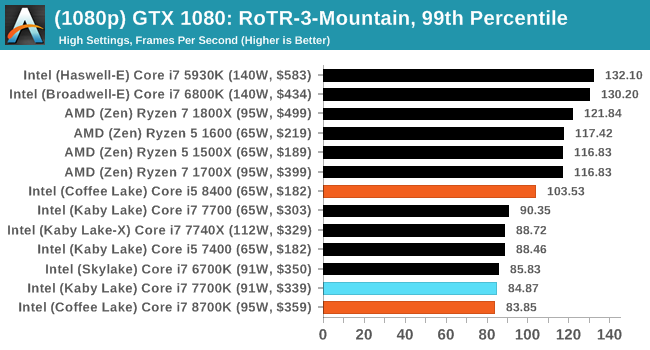
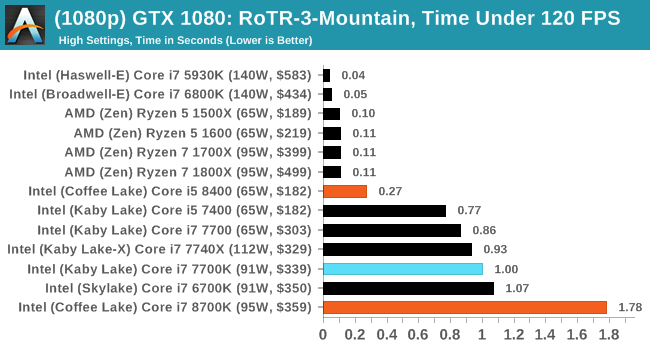
4K
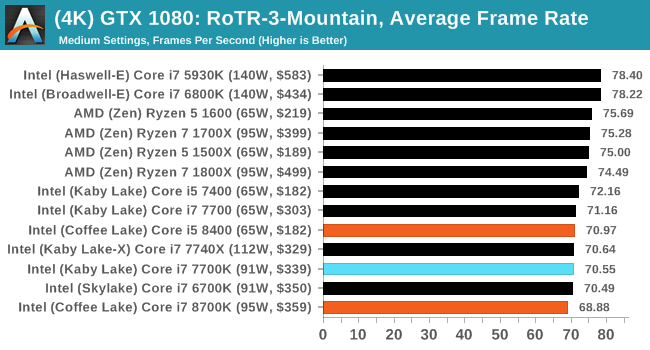
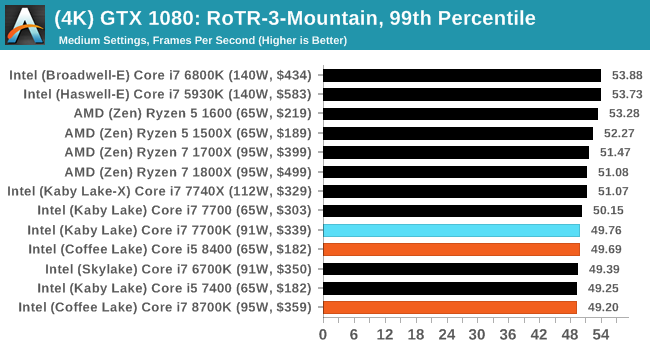
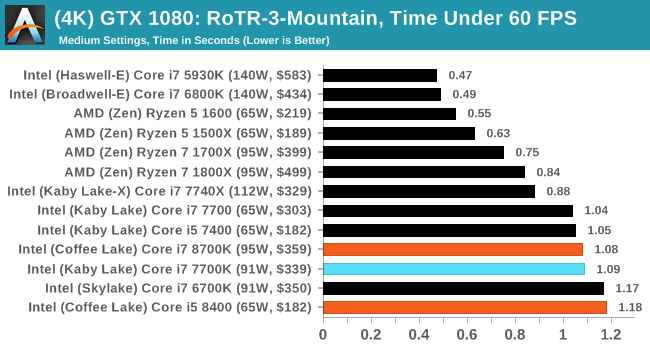
The 8700K did not seem to play nicely with RoTR. We'll go back and check this.


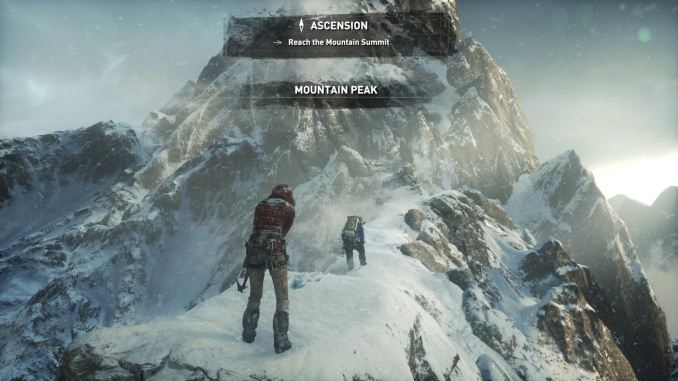












222 Comments
View All Comments
watzupken - Saturday, October 7, 2017 - link
There are pros and cons of having integrated graphics. It sure takes up a lot of die space, but it is something that allows Intel to sell a lot of chips. Amongst enthusiasts, this is unnecessary, but this group may only represent a small percentage vs corporates that need only decent CPU and no need for fancy graphics. To be honest, Intel could likely have created a 8 core processor easily since the die size is still fairly small for Coffee Lake, but they chose not to. I don't think it is a matter of the graphic that is holding them back.James5mith - Friday, October 6, 2017 - link
Now to wait for the generation of Intel CPU's with native Thunderbolt3 on-die like Intel announced earlier this year.Zingam - Saturday, October 7, 2017 - link
Why is that a good thing?ReeZun - Friday, October 6, 2017 - link
"The difference between the Ryzen 5 1500X and the Core i3-8350K would be interesting, given the extreme thread deficit (12 threads vs 4) between the two."The 1500X houses 8 threads (not 12).
watzupken - Saturday, October 7, 2017 - link
The difference between the R5 1500X and i3 8350K goes beyond just the number of threads. The cache is also 2x more on the Ryzen chip. However, the i3 chip have the advantage of being able to reach higher clockspeed. I do agree that this will be an interesting comparison.sweeper765 - Friday, October 6, 2017 - link
I'm not up to date with current bios versions.Is multi-core enhancement still present in z370 motherboards? That would get rid of all those differences in turbo speeds. I know it is technically overclocking but i bet it's a pretty safe procedure without increasing the voltages.
Also, what's the deal with the 8700? Is it just as good as 8700k (minus 100mhz) if one decides not to overclock? Just trying to gather as many practical facts as i can before formulating an upgrade plan (sandy bridge user hehe )
This cpu family looks good on specs and benches (maybe the first worthy successor to sandy bridge) but it's not perfect. I hate that Intel decided not to solder, i expect temperatures to soar in the high 80's. Also the current motherboards are somewhat lacking in ports (usb, lan, sata).
I love my sandy bridge setup though.
6 1/2 years old and still going strong. Overclocked, cool, stable, silent. With current cpu's you don't get all these points.
Even if i upgrade i'm not going to touch it.
Ian Cutress - Saturday, October 7, 2017 - link
Is multi-core enhancement still present in z370 motherboards?As an option, yes.
As default? Will vary board to board. You can disable it.
However we had trouble with one of our boards: disabling MCT/MCE and then enabling XMP caused the CPU to sit at 4.3 GHz all day. Related to a BIOS bug which the vendor updated in a hurry.
Jodiuh - Friday, October 6, 2017 - link
What’s up with those rise of Tomb Raider benchmarks? Am I too seriously believ the i5 7400 is more capable than the 8700K...did I miss the overclocking part?Tech reports review much better with results that make sense.
peevee - Friday, October 6, 2017 - link
"Core i5-8600K and the Core i7-8700. These two parts are $50 apart, however the Core i7-8700 has double the threads, +10% raw frequency"+10%? Count again.
boeush - Friday, October 6, 2017 - link
Regarding most normal/gaming scenarios, I'm wondering with the 8700/k whether one couldn't get an even better performance by disabling hyperthreading in the UEFI.That would still yield 6 threads, but now ostensibly with a full 2 MB of L3 per thread. Plus, lower power per core (due to lower resource utilization) might mean more thermal headroom and higher overall sustained frequencies.
So you'd get maximum-possible single-thread performance while still being able to run 6-wide SMT (which, under most normal usage, isn't even a constraint worth noting...)
Amirite?